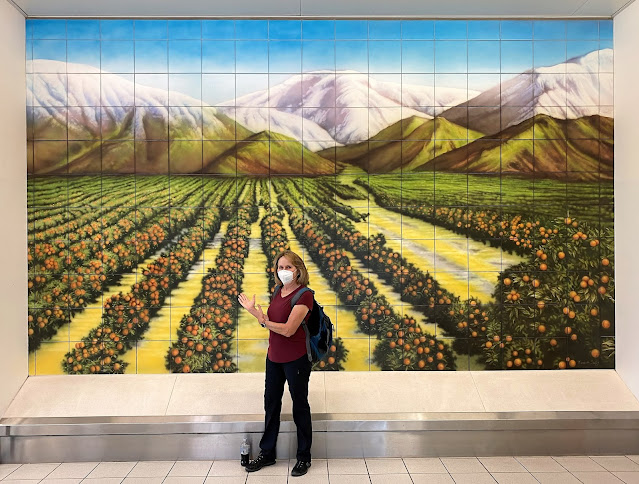Pages
Tuesday, March 30, 2021
TEXAS PANHANDLE, AMARILLO: SLUG BUGS AND CADILLACS
Friday, March 26, 2021
THREE SUMMITS: #3, BLACK MESA IN OKLAHOMA, CAPULIN VOLCANO, AND SUGARITE CANYON
October 18, 2020
We had one more highpoint to summit on this trip: Black Mesa, the highest point in Oklahoma. One of the interesting thing about this highpoint is that Black Mesa actually extends into Colorado and New Mexico, and the highpoint in both of those other states is higher than the highpoint in Oklahoma (but is not the highpoint in those states).
Monday, March 22, 2021
KANSAS: CIMARRON NATIONAL GRASSLAND, THE SANTA FE TRAIL, AND POINT OF ROCKS
October 17, 2020
After our exhausting climb to the summit of Mount Sunflower 🤣, we needed some nourishment, so we stopped in Syracuse (Kansas, not New York) for lunch and had a very mediocre tostada in a restaurant called "Porky's Parlor." The name alone should have warned us away. Not one other person besides us was wearing a face mask. Yep, Trump county.
However, at least we got to visit the "Home of the USA's First All-female City Council." That was a treat!
 |
| Mural in the restaurant parking lot |
Our last stop was at a tall butte called Point of Rocks. At 3,540 feet, it is the third highest point in the state and was an important landmark for travelers heading west.
Thursday, March 18, 2021
THREE SUMMITS: #2, MOUNT SUNFLOWER IN KANSAS
Sunday, March 14, 2021
THREE SUMMITS: GETTING THERE AND SUMMIT #1, PANORAMA POINT IN NEBRASKA
October 16, 2020
Now that we have been to all 50 states, my husband is trying to "fill in the spaces" on the United States map--traveling to places within the states where we have not been. Since we have been to many of the major cities, that means that he is looking for, shall we say, "out-of-the-way" places to visit. He also is keeping a list of state high points that he has climbed (or driven to). That's how he got the idea to travel to a rather obscure area of the U.S.--the western regions of Oklahoma, Kansas, and Nebraska. He could check three high points off his list and visit a little-known area of the U.S. Perfect.
And just to convince you of how exciting this trip was going to be, here is the location of those three high points. Note how close they are to major cities--heck, to any city. They are in Nowheresville.Wednesday, March 10, 2021
NORTHEASTERN CALIFORNIA: LAVA BEDS NATIONAL MONUMENT
September 6, 2020
On July 22, 2020, a thunderstorm rolled through northeastern California, and lightning strikes started several fires, including one in Lava Beds National Monument. Named the Caldwell Fire, it roared through over 83,000 acres before it was contained. The area, dense with ponderosa and lodgepole pine, had not seen fire in over 40 years.
About 70% of the park was scorched. If you do a Google image search of Lava Beds National Monument, you get photos like these that show trees and grasses growing on the perimeters of the lava beds . . .
 |
| From here |
. . . and also throughout lava fields.
 |
| From here |















































